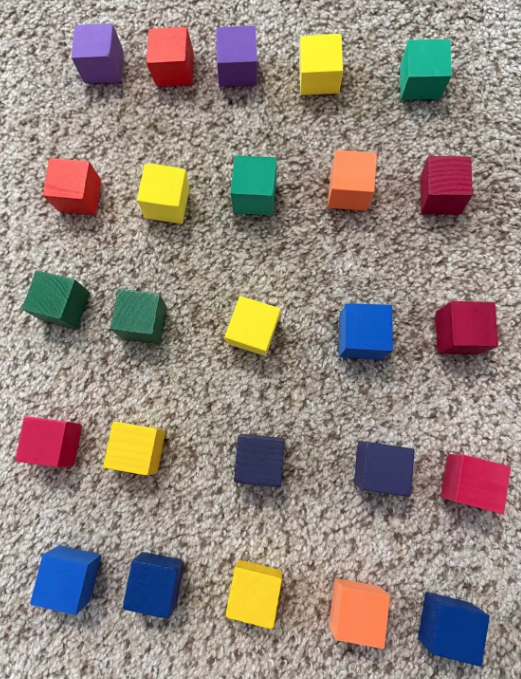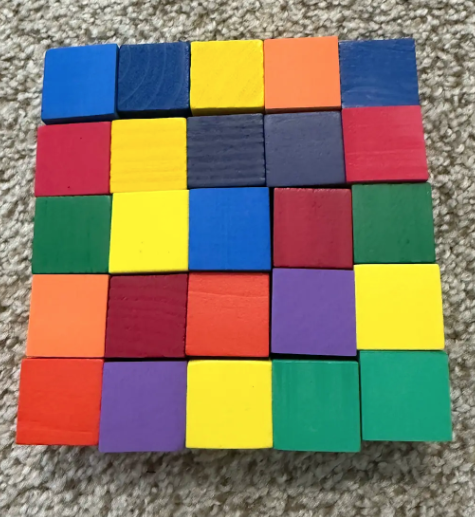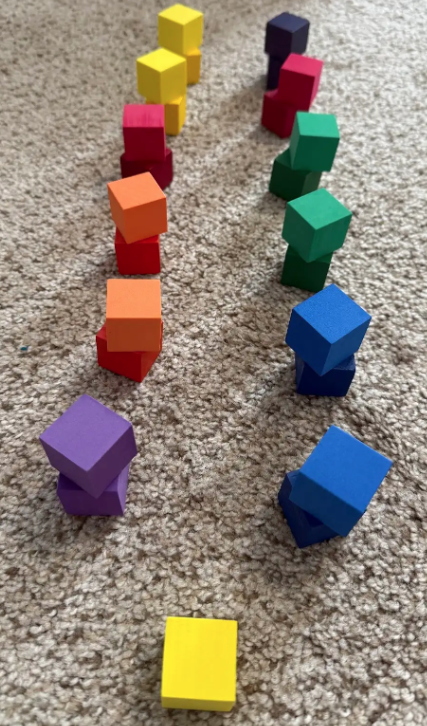Counting Collections (K-2)
By Dee Crescitelli (University of Louisville)
![]() Counting collections is an activity in which students count a collection of objects - such as toys, two-color counters, candy, or
similar items - and represent that count in ways that make sense to them. For early learners, this activity supports their
developing understanding of core counting principles such as 1-1 correspondence and cardinality. As students grow more
sophisticated in their counting and work with larger collections, they develop an awareness of and make use of the structure
of numbers. This activity may be done solo, or in pairs, or small groups.
Counting collections is an activity in which students count a collection of objects - such as toys, two-color counters, candy, or
similar items - and represent that count in ways that make sense to them. For early learners, this activity supports their
developing understanding of core counting principles such as 1-1 correspondence and cardinality. As students grow more
sophisticated in their counting and work with larger collections, they develop an awareness of and make use of the structure
of numbers. This activity may be done solo, or in pairs, or small groups.
- knowing number names and the counting sequence
- one-to-one correspondence
- cardinality
When children count, they need to match one number word to one object in the set, without skipping objects or double-counting. For example, if a child is counting five blocks, they point to each block in turn and say:
- “one” (touch first block),
- “two” (touch the second block),
- “three” (touch the third block), and so on.
One-to-one correspondence: the matching of one spoken number word ↔ one object touched
Without it, children might say too many numbers (overcount) or too few numbers (undercount), leading to errors.
So, one-to-one correspondence is what makes counting meaningful and accurate; it's how children connect the abstract number sequence (“one, two, three…”) to the real world of objects.
Cardinality is the understanding that the last number said when counting a group of objects tells “how many” are in the group. For example, if a child counts five blocks and says, “one, two, three, four, five,” understanding that the last number five represents the total number of blocks is cardinality.
Engaging in the Activity
Let's observe counting a collection in first grade. Two different students counted nine jumping frogs. One student carefully moved each yellow frog as they counted, and then each green frog, before exclaiming “... and the blue frog makes nine!”
Another student counted by showing how to make five “like on dice,” and then lined up the remaining four.
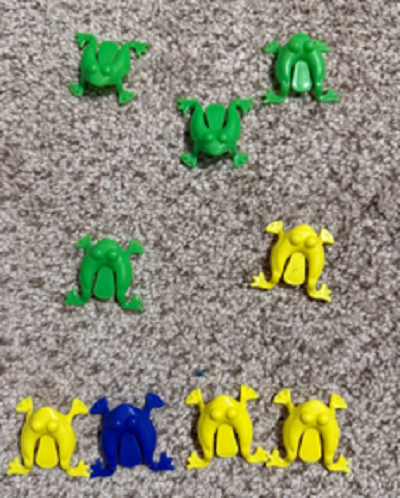
Watching and listening as students count is important for observing their emerging understanding of how counting works in our number system.
- counting in groups (such as 2s, 5s, 10s, etc.)
- using structures to keep track of the count
- “tenness” - recognizing 10 as a building block for larger numbers
Here are several ways students arranged a collection of 25 cubes for counting. What might you ascertain about student thinking in these arrangements? How do you think they counted the collection?
An extension of this activity is to ask children to represent their counting on paper.
When asked, they might draw a picture of their collection or use tally marks or other symbols to show their counting strategies. A recording sheet can help students organize their work and provide language support.
Below we see the recording sheet from a different student who also counted 25 cubes. What do you notice about their thinking?
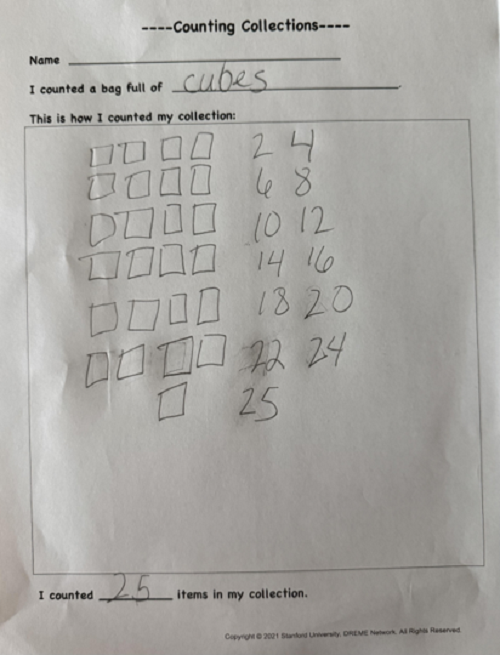
Did you notice how they arranged them in rows of 4 cubes each, but then described counting the cubes by two until there was just one left over?
Counting Collections is a learning activity suitable for use at any grade level. See our explorations of Counting Large Collections or Counting Collections with Fractions for ideas about counting in intermediate grades and beyond.
Recommended Resources:
To learn more about Counting Collections, we recommend the following resources:
- Counting Collections in Choral Counting and Counting Collections by Megan Franke, Elham Kazemi, and Angela Chan Turr (2018)
- Counting Collections Overview from Development and Research in Early Math Education at Stanford
This resource provides Counting Collections activities designed to engage students while connecting the content of counting, children's thinking in counting, and pedagogy in classroom practice. - Counting Collections | NRICH>: Variations of Counting Collections from the Early Years Program at Cambridge University
